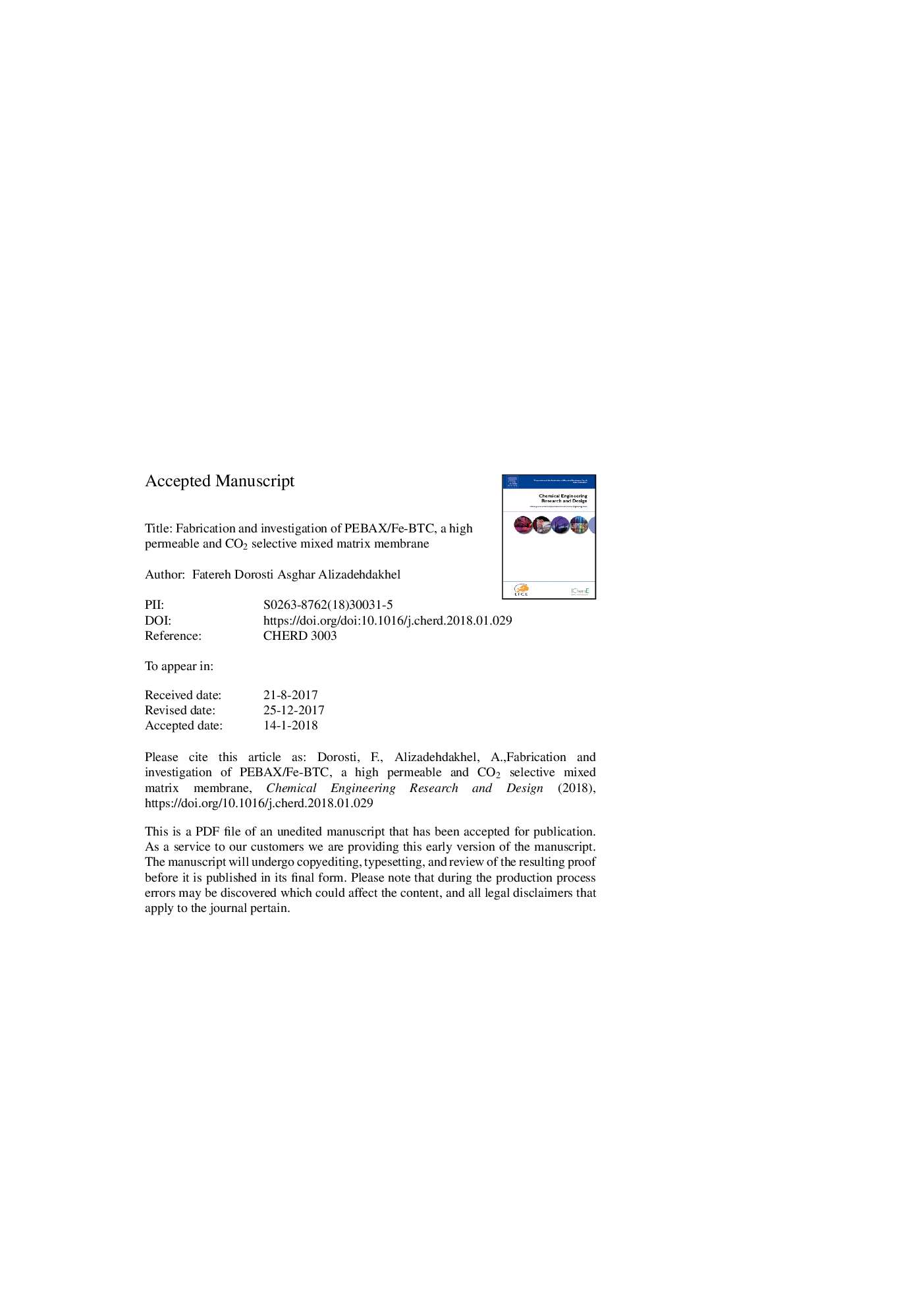| Article ID | Journal | Published Year | Pages | File Type |
|---|---|---|---|---|
| 7005558 | Chemical Engineering Research and Design | 2018 | 35 Pages |
Abstract
Mixed matrix membranes comprising commercial poly (ether-block-amid) or PEBAX® (1657) as continues phase and Fe-BTC metal organic framework as disperse phase are fabricated via phase inversion method. To investigate membrane structure various analysis including SEM, TGA, DLS and FTIR are performed. CO2 and CH4 permeability and Selectivity are measured for all membranes at 25 °C and different pressures from 3 to 25 bar. Moreover, mixed gas tests are implemented for 10/90 CO2/CH4 mixture. Cross section SEM images showed proper particles distribution and good interaction between polymer and particles. The replacement of various bounds in FTIR test confirmed the good compatibility of Fe-BTC with polymer matrix too. TGA results showed acceptable thermal resistance of all membranes. Membranes permeability increased with increase in particles loading percent due to high porosity of particles and also high adsorption capacity especially for CO2 molecules. The highest CO2 permeability was belong to PEBAX/Fe-BTC 40 wt.% membrane which was 425.4 Barrer. Mixed matrix membranes showed selectivity enhancement too. However, PEBAX/Fe-BTC 20 wt.% membrane had the best selectivity of 22.19, in membrane with higher loading percent particles agglomeration made interfacial voids which caused selectivity decrement specially in 40 wt.% loading percent. All membranes showed permeability and selectivity growth till 7 bar pressures however, selectivity decreased due to plasticization effect at higher pressures of 15 and 25 bar. Membrane with 25 wt.% loading percent showed 50% and 9% increase in CO2 permeability and selectivity at 7 bar compare to base pressure of 3 bar.
Related Topics
Physical Sciences and Engineering
Chemical Engineering
Filtration and Separation
Authors
Fatereh Dorosti, Asghar Alizadehdakhel,
